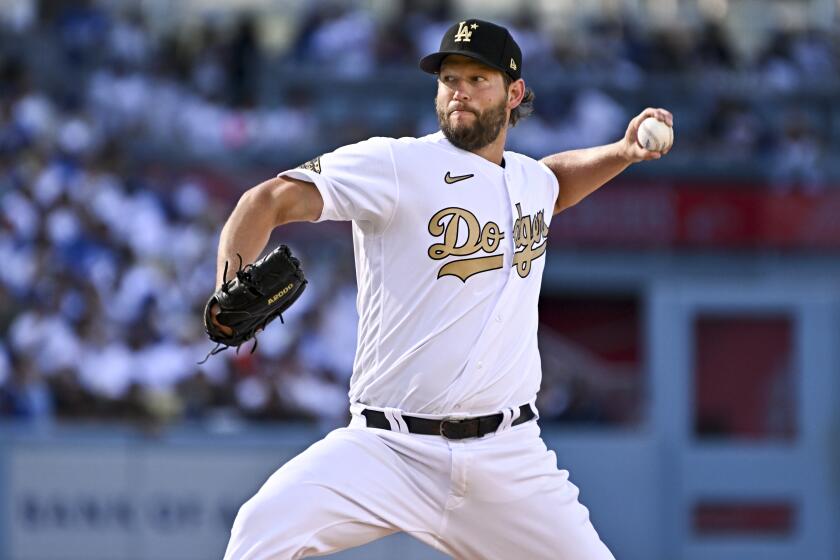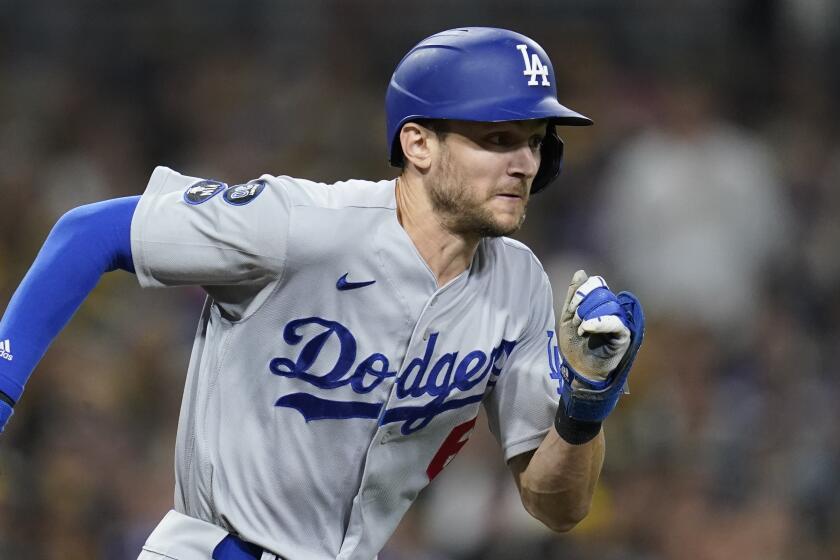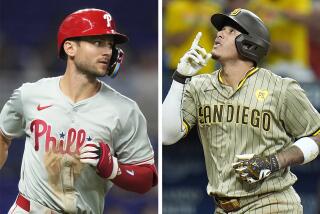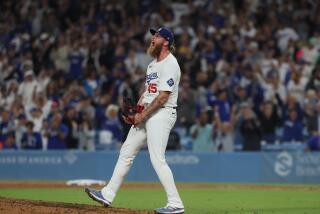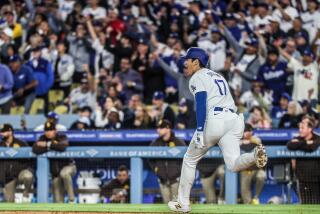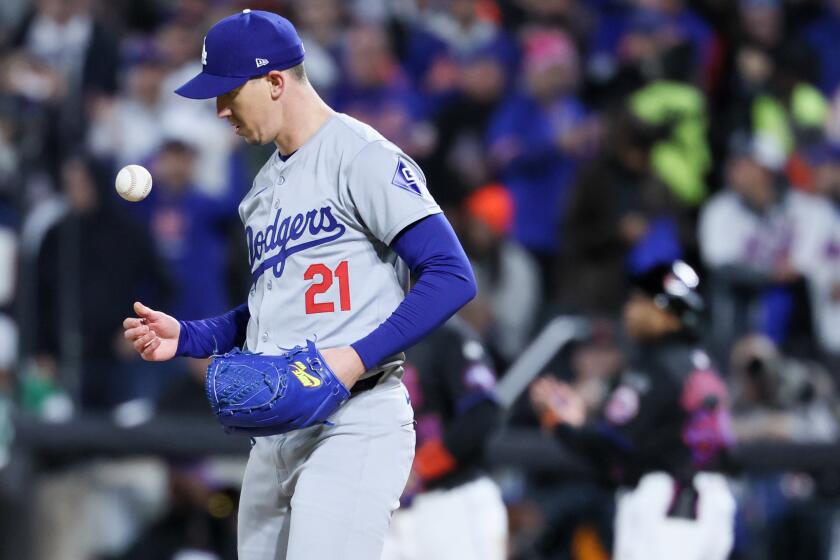A blue wave at Chavez Ravine? Here’s a look at the Dodgers’ top prospects
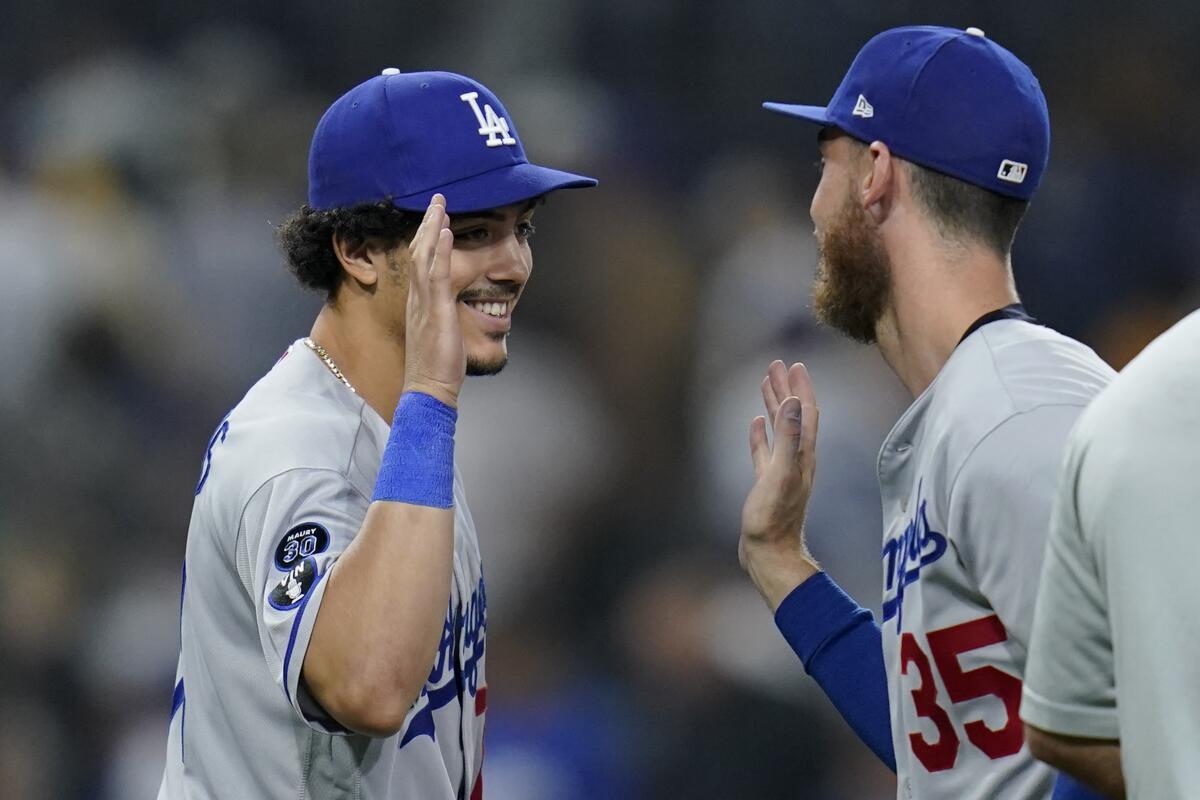
SAN DIEGO — The seed was planted in early November when Dodgers president Stan Kasten told The Times that “we think we are now on the precipice of the next wave of young guys” and that the team “needs to make room to allow that to happen.”
Does that mean a full-fledged youth movement is about to sprout amid the veteran core of a club built to contend for a World Series title every year? Probably not.
Andrew Friedman, the team’s president of baseball operations, admitted in November that there is some risk to adding too many prospects at once, and that the Dodgers “need to figure out the right way and the right timing to integrate some of these talented young players.”
Whether that infusion of youth is more trickle than wave, there are at least five highly touted prospects — pitchers Bobby Miller and Gavin Stone, infielders Miguel Vargas and Michael Busch and outfielder James Outman — who appear poised to contribute at some point in Chavez Ravine next season.
“I don’t think it’s too much of a reach to say that five or six young kids, young ballplayers, are going to impact our club,” Dodgers manager Dave Roberts said at this week’s winter meetings in San Diego.
“I’m not saying at the beginning of the year, but I would argue that each year, we’ve had four, five or six ‘kids’ that have impacted our club.”
Who has the most upside of the five? Who has the best chance to carve out a significant big league role in 2023? What are their strengths and weaknesses?
A closer look at the Dodgers’ Fab Five prospects with input from Roberts, triple-A manager Travis Barbary and two major league talent evaluators — we’ll call them Scout One and Scout Two — who are familiar with the upper levels of the Dodgers’ system and were granted anonymity to speak freely about the players.
MIGUEL VARGAS, 3B/1B/LF
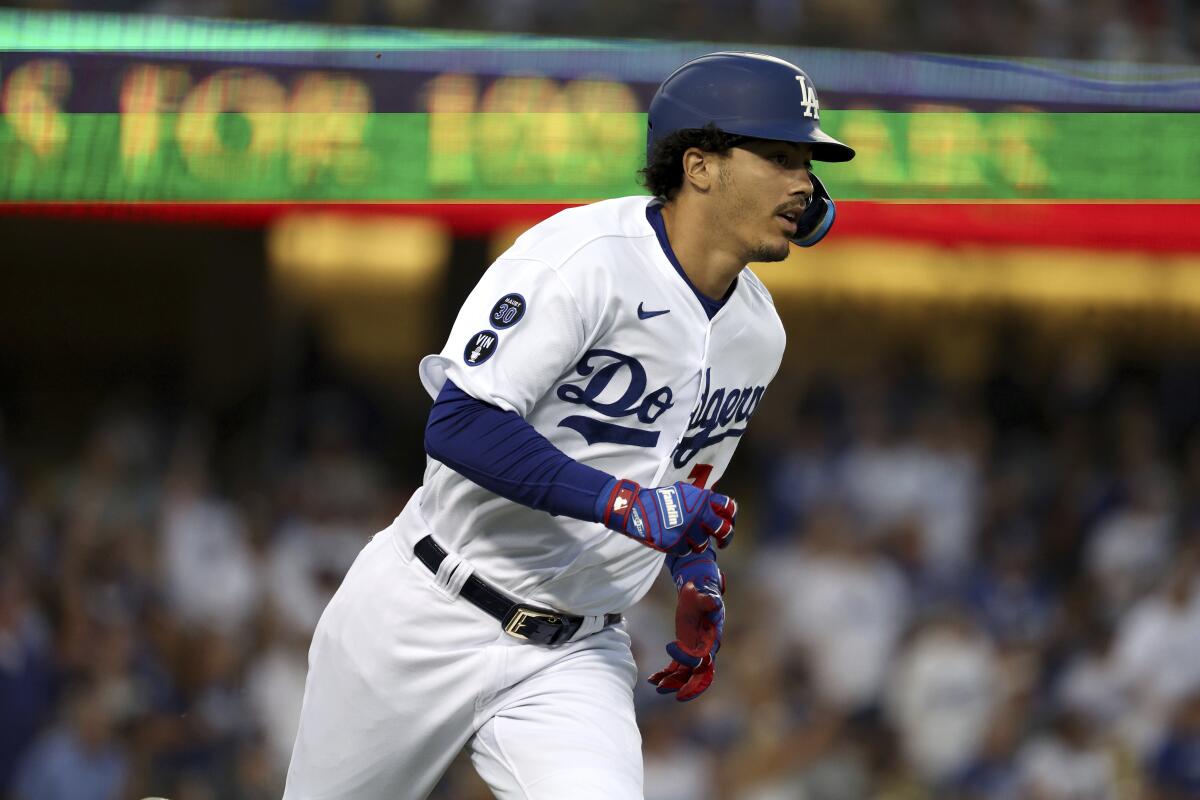
Age: 23; Ht-Wt: 6-3, 205; Bats-Throws: R-R; Signed: Cuba, 2017.
Most scouts believe the Cuban native’s bat will play in the big leagues, and with few indications the Dodgers will bring back veteran third baseman Justin Turner, Vargas has the clearest path to substantial playing time next season.
Vargas has a .313 average, .878 on-base-plus-slugging percentage, 49 home runs and 265 RBIs in 410 minor league games and hit .170 with one homer and eight RBIs in 18 games for the Dodgers in September.
He’s shown improved pull-side power, an ability to drive the ball to the right-center-field gap and advanced plate discipline, but defensive limitations leave him with no clear-cut position.
“Our scouts like him — they think he’s an everyday hitter in the big leagues,” Scout One said. “They’re just not sure where he’s gonna play.”
The Dodgers announce they’ve finalized a one-year deal with Clayton Kershaw. Justin Verlander, however, agrees to a deal with the Mets.
Vargas has good hands and a decent arm, but slow feet limit his range and mobility in the infield. Asked this week name Vargas’ best position, Friedman said, “Probably third.”
Scout Two said he “thinks” Vargas can play third base in the big leagues, and Barbary said Vargas “made a lot of progress at third” in his 113 games at Oklahoma City in 2022.
“Reading hops, being in the right position based on our scouting reports, that in-between-pitch focus, staying locked in from pitch to pitch and not have his mind wander, I thought, were huge keys for him last year,” Barbary said.
BOBBY MILLER, RHP
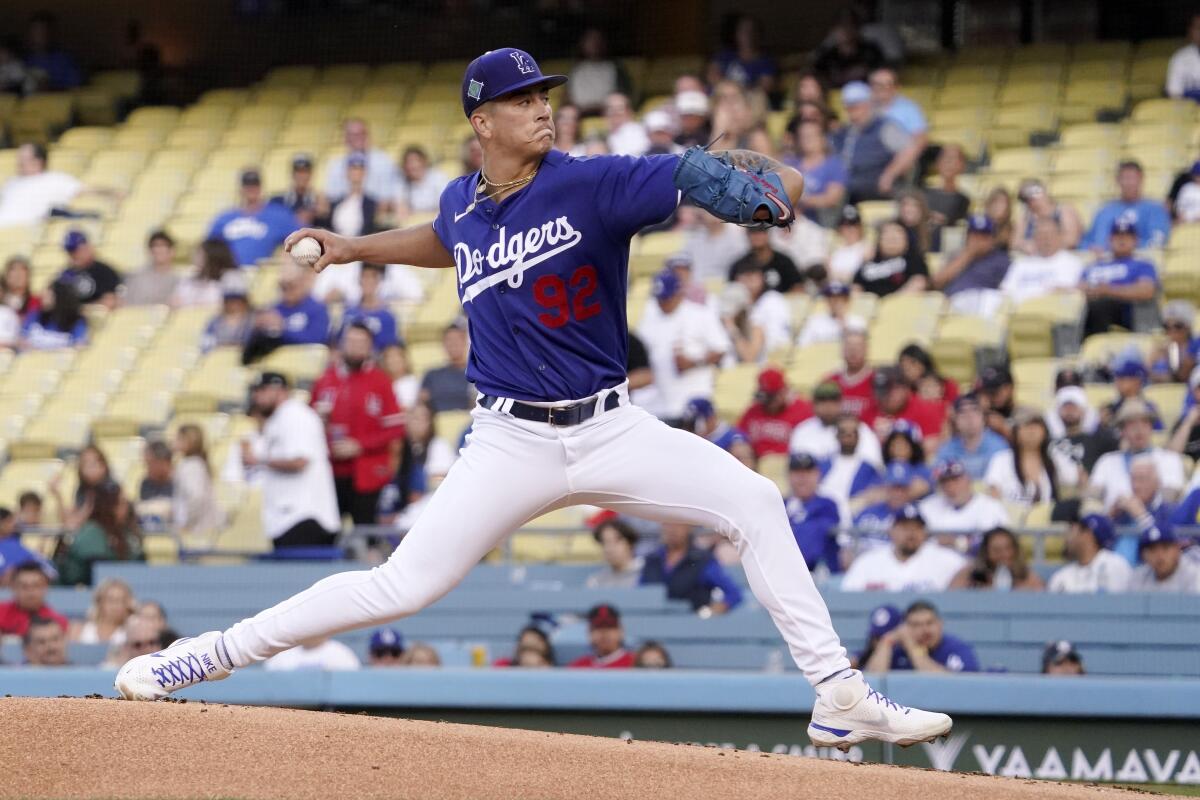
Age: 23; H-W: 6-5, 220; B-T: L-R; Drafted: Louisville, 2020 (1st round).
Miller wasn’t the first pitcher drafted from his college rotation — that honor went to left-hander Reid Detmers, selected 10th overall by the Angels in 2020 — but he might be the steal of that first round at No. 29.
The burly right-hander mixes a riding four-seam fastball that sits between 95-98 mph and touches 100 mph with a sinking, tailing 93-96-mph two-seamer, a late-breaking, 84-87-mph slider, a mid-80s changeup and fringy low-80s curve.
Miller spent most of 2022 at double-A Tulsa, going 6-6 with a 4.45 ERA in 20 games, striking out 117 — including 14 in six innings against Round Rock on Sept. 1 — and walking 31 in 91 innings. He closed with four triple-A starts, going 1-1 with a 3.38 ERA, 28 strikeouts and six walks in 21 1/3 innings.
“He’s nasty,” Scout One said. “He has power stuff. When I saw him early last year, he was absolutely dominant.”
Barbary said Miller’s stuff is elite enough “to be a No. 1 guy in the rotation.” Scout One projects Miller as “at least a No. 3 starter and potentially better” if he develops a consistently effective third pitch.
“His fastball-slider were the better combo for me,” Scout One said. “He flashed a good changeup. He just couldn’t repeat it.”
If the Dodgers don’t acquire another proven starter, Miller could compete with Ryan Pepiot for the fifth spot in the rotation behind Julio Urias, Clayton Kershaw, Tony Gonsolin and Dustin May. But he will probably open the season at triple-A and provide rotation depth in case of injury.
“We’ve all heard about the stuff,” Roberts said. “Love the compete. Love the body. Love the head. We’re going to see Bobby this year. How much? That’s up to him.”
JAMES OUTMAN, OF
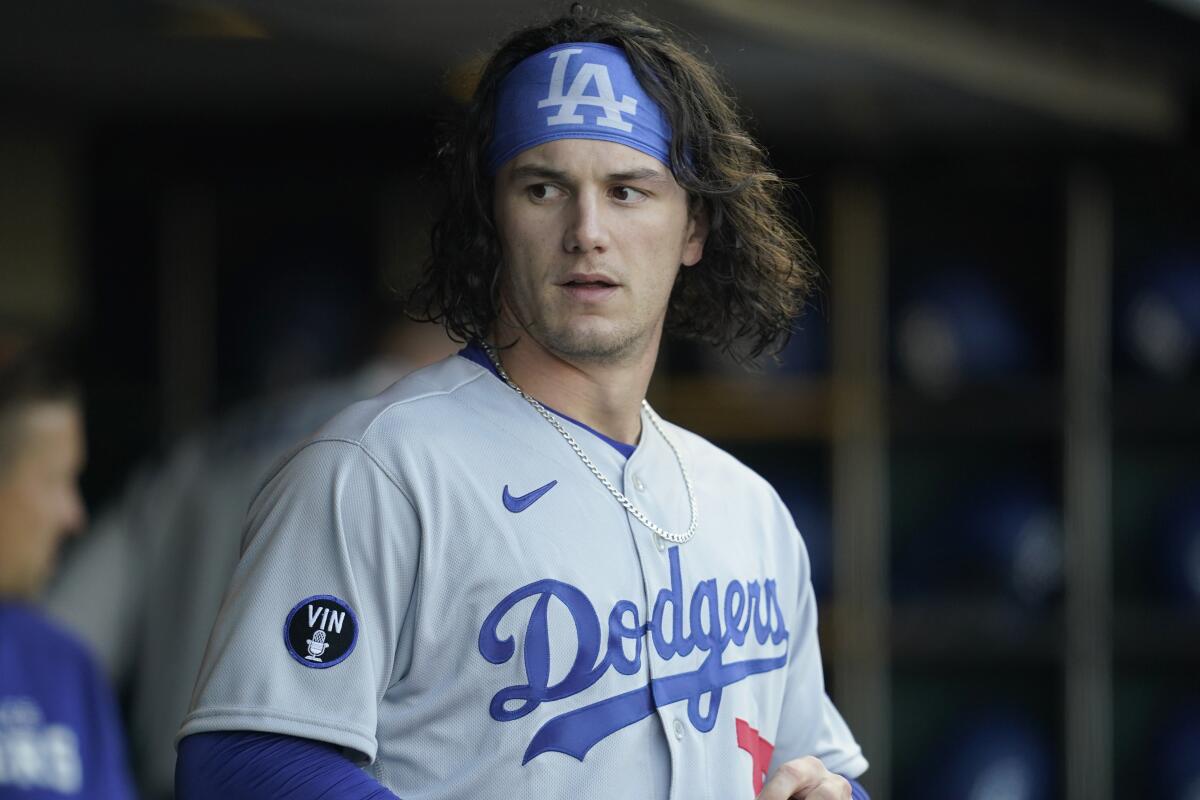
Age: 25. H-W: 6-3, 215; B-T: L-R; Drafted: Sacramento State, 2018 (7th round).
Outman, 25, is the best athlete in the system, a late-bloomer with above-average speed and arm strength, the defensive instincts and quickness to play center field and a keen eye to go with his burgeoning power at the plate.
A standout linebacker in high school, Outman had a breakout 2022, batting .294 with a .978 OPS, 31 homers, 106 RBIs and 13 stolen bases in 125 games for Tulsa and Oklahoma City and hitting for the cycle twice in a five-day span in late August.
But there are concerns about an uppercut in his swing that leaves Outman vulnerable to elevated fastballs and down-and-away breaking balls and contributed to his 152 strikeouts last season.
“When you’re striking out that many times in the minor leagues, it’s a little concerning to me,” Scout One said. “This good of an athlete? He should not strike out 152 times. But I believe he has the hand-eye coordination to flatten his swing out and be a better hitter who is not looking to just drive the ball every at-bat.”
The Dodgers and Angels are among the teams active in transactions as the MLB winter meetings pick up pace Monday in San Diego.
Outman could emerge as a platoon partner with Trayce Thompson in center field, and his speed, power and ability to play three outfield spots makes him an ideal bench candidate.
“To be a corner guy with the Dodgers, you’re looking at 20-plus homers, 85-plus RBIs and an .800 OPS,” Scout Two said. “I’m not sure he’s that guy at the big league level on an every-day basis. I still think he’s an extra outfielder.”
GAVIN STONE, RHP
Age: 24; H-W: 6-1, 175; B-T: R-R; Drafted: Central Arkansas, 2020 (5th round).
Stone is not as physically imposing as Miller and may not have Miller’s upside, but he might be the most big league ready of the team’s top pitching prospects.
The organization’s minor league pitcher of the year in 2022, Stone attacks hitters with a lively fastball that sat between 90-92 mph at Central Arkansas but ticked up to 93-97 mph in 2021, when he led the farm system with 138 strikeouts for Class-A Rancho Cucamonga and Great Lakes.
Stone rose from Class-A to double-A to triple-A last season, going a combined 9-6 with a 1.48 ERA in 26 games, striking out 168, walking 44 and holding hitters to a .206 average in 121 2/3 innings.
His low release point produces good run on his fastball, and his mid-80s slider and high-80s changeup with late-fading action have developed into solid secondary pitches. Stone projects as a back-of-the-rotation starter, but he could also be used as a multi-inning reliever.
“You look at stuff and you’re like, it’s a no-brainer, Miller has the higher ceiling,” Barbary said. “But when you watch Stone pitch, there’s just something about his composure, how he handles himself.
“He pitched some big games for us at the end of the year and was not fazed. I feel like he could start a playoff game [for the Dodgers] and do the same thing up there as he would in Oklahoma City.”
MICHAEL BUSCH, 2B/OF
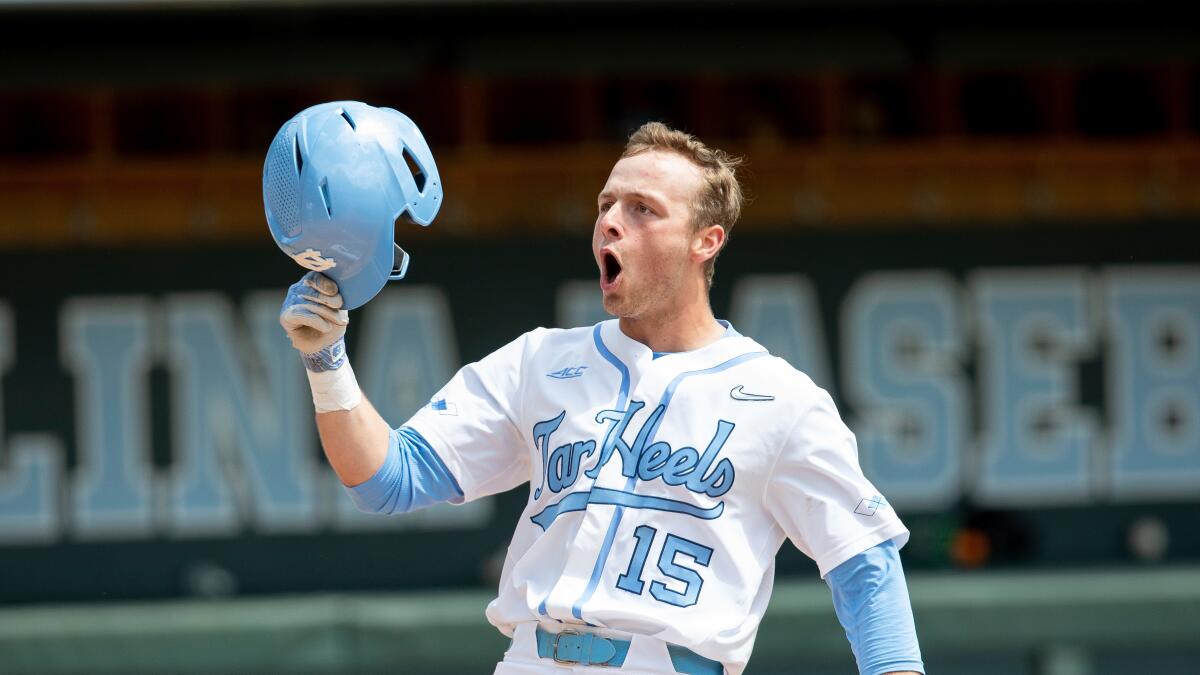
Age: 25. H-W: 6-1, 210; B-T: L-R; Drafted: North Carolina, 2019 (1st round).
Busch’s stocky body, powerful left-handed stroke, ability to drive the ball to both gaps, plate discipline and defensive positions — first base in college, second base in the pros — have drawn comparisons to Dodgers slugger Max Muncy.
Busch hit .274 with an .881 OPS, 32 homers, 38 doubles and 108 RBIs in 142 games at Tulsa and Oklahoma City in 2022, with 167 strikeouts and 74 walks in 552 at-bats. But some question his ability to play second base in the big leagues.
“He’s a hitter — there ain’t no question about that,” Scout One said. “He can use the whole field. He stayed in pretty good against left-handers. But with the elimination of the shift, he’s gonna be harder to hide [on defense]. I wrote him up as kind of a utility guy who could bounce around.”
Barbary, who had Busch for 111 games at Oklahoma City last season, begged to differ.
“Watching him read hops, knowing when to get the ball, when to lay back, learning the right angles to take, turning the double play … it wasn’t the same guy I saw two years ago,” Barbary said. “This was much more efficient, the ball in and out of the glove quickly, accurate thrower, very confident. I think, for sure, he can play second base in the big leagues.”
Bottom line
Adding more minimum-salary youngsters would help the Dodgers get their 2023 payroll under the luxury tax threshold for the first time in a full season since 2019, thus resetting their penalties to the lowest possible level.
But the Dodgers, who have shaved roughly $100 million off their 2022 competitive balance tax payroll of $270 million, think this group of prospects is worth clearing space for.
“Andrew and I and the organization believe there are some young players who need a little room, some runway, some opportunities, and they’re going to have that,” Roberts said. “I think that’s a good thing for us.”
More to Read
Are you a true-blue fan?
Get our Dodgers Dugout newsletter for insights, news and much more.
You may occasionally receive promotional content from the Los Angeles Times.

